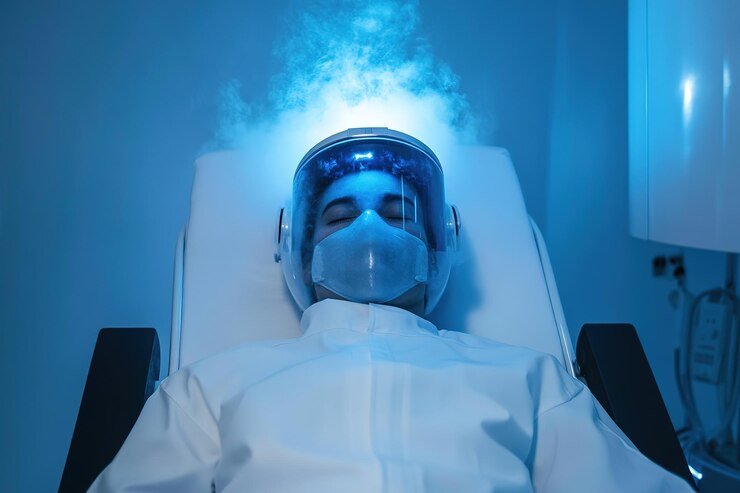>> Power up your recovery game with the most innovative tools for 2025!
Introduction:
The world of fitness is constantly evolving, but one aspect that’s been gaining significant attention in 2025 is recovery. As we push our bodies to new limits through intense workouts, understanding how to properly recover has become just as important as training itself. The recovery revolution is here, and it’s reshaping how athletes, fitness enthusiasts, and everyday people recover from strenuous activities. From futuristic tech tools to innovative techniques, recovery is no longer just about rest—it’s about smart, strategic actions that help you bounce back stronger than ever.
The Rise of Recovery Tech in 2025
Recovery is not a one-size-fits-all solution. In 2025, tech has taken the lead, providing tools that monitor, analyze, and accelerate recovery in ways we never thought possible. Smart wearables and recovery-focused devices are more advanced than ever, offering personalized insights and real-time feedback to optimize your recovery process.
1. Smart Wearables and Biofeedback Devices
Wearables such as the Oura Ring and WHOOP Strap have become fitness must-haves for their ability to track sleep patterns, heart rate variability (HRV), and body temperature—key indicators of how well you’re recovering. These tools help users fine-tune their routines by highlighting areas that need improvement. For example, if your HRV is low, it could indicate the need for more rest or stress management techniques.
2. Cryotherapy and Heat Therapy Systems
Cryotherapy isn’t just a cold plunge anymore. In 2025, cryosaunas are offering full-body recovery experiences that target inflammation and promote faster healing. Alongside this, heat therapy systems—like infrared saunas and heat pads—help with muscle relaxation and improved blood circulation. Both therapies are popular for enhancing the body’s natural healing processes, reducing soreness, and even boosting mood.
Innovative Techniques: Breathing, Stretching, and Mobility
While recovery technology takes center stage, there are plenty of manual techniques that play a critical role in improving flexibility and reducing post-workout discomfort.
1. Deep Breathing and Meditation
Recovery isn’t only physical—it’s mental. Deep breathing exercises and meditation have become essential practices for reducing cortisol levels, which can interfere with muscle repair and growth. Apps like Calm and Headspace are helping people incorporate mindful recovery into their fitness routines, leading to reduced stress and improved overall recovery.
2. Fascial Stretch Therapy (FST)
FST is gaining recognition as a key technique to help improve range of motion and relieve tightness. By stretching the fascia (the connective tissue surrounding muscles), individuals can unlock better mobility and reduce muscle tension. This technique is used by athletes and fitness lovers alike, and its demand is expected to grow in the coming years.

Recovery Supplements: Fueling Your Restoration
In addition to physical recovery practices, proper nutrition is critical. Recovery supplements have evolved, with new formulas designed to aid in faster muscle repair, hydration, and joint health.
1. Electrolyte and Hydration Powders
Staying hydrated is essential for muscle recovery, but it’s not just about water. Electrolytes play a vital role in fluid balance and muscle function. Many recovery powders now combine hydration with electrolytes like sodium, potassium, and magnesium to optimize performance and prevent cramps.
2. Collagen and Protein Blends
Collagen supplements are an essential addition to any recovery routine. They help improve joint health and promote skin and tissue repair. Additionally, post-workout protein shakes containing both fast-digesting whey and slow-digesting casein ensure that muscles receive the right nutrients at the right time.
The Mental Side of Recovery: Rest and Mindset
Recovery isn’t just about resting the body—it’s also about nurturing the mind. The right mindset can drastically influence how your body responds to recovery techniques. Building a recovery-focused mindset allows you to understand that recovery time is an active process, not simply downtime.
1. Sleep Optimization
One of the most powerful recovery tools is sleep. In 2025, people are optimizing their sleep environments with smart beds, weighted blankets, and sleep trackers to ensure that their bodies get the restorative rest they need. Improving sleep quality has been shown to reduce muscle soreness, improve cognitive function, and promote overall well-being.
2. Active Recovery Days
Active recovery involves low-intensity activities such as walking, swimming, or yoga, designed to keep the blood flowing without straining the muscles. This strategy helps flush out metabolic waste, enhances circulation, and accelerates the healing process.
Conclusion: Future of Recovery in 2025 and Beyond
The recovery revolution is here, and it’s transforming how we approach fitness. With the combination of innovative technology, personalized techniques, and recovery-focused nutrition, you can expect faster recovery times, fewer injuries, and more effective workouts. As fitness continues to evolve, recovery will remain a central component of every workout plan, pushing the boundaries of what’s possible for athletes and fitness enthusiasts alike.
Disclaimer: This blog is intended for informational and educational purposes only. The views expressed are personal opinions or general insights, not professional or legal advice. Readers should do their own research or consult relevant professionals before taking action based on this content.
#RecoveryRevolution #RecoveryTools #FitnessRecovery #SmartWearables #Cryotherapy #Anslation #carrerboook #ActiveRecovery #BreathingTechniques #Electrolytes

